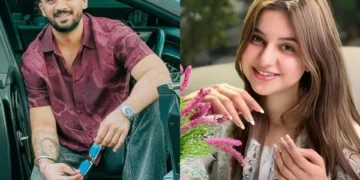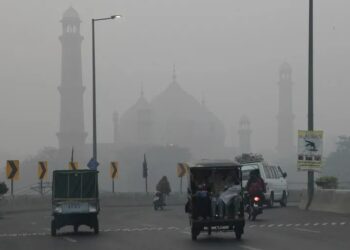Written by: Abdul Basit Alvi
India observes January 26 as its Republic Day, claiming to be a true republic. However, this assertion is at odds with the reality of the nation’s situation and governance. To understand what constitutes a genuine republic, it’s essential to grasp its true meaning and spirit. A republic, in its most authentic form, represents more than just a political system; it embodies the values and ideals that unite a society. At its core, a republic is a political structure in which the head of state is chosen by the people or their representatives, highlighting the importance of citizenship, the rule of law, and the safeguarding of individual rights. The essence of a republic is not just found in its framework, but in the principles that guide the relationships between the government and its citizens, as well as among the citizens themselves. It is about striking a balance between freedom and responsibility, and being dedicated to justice, equality, and the collective well-being.
Central to any republic is the rule of law, which asserts that the law is supreme and not subject to the arbitrary decisions of rulers or institutions. In a true republic, no one is above the law, not even those in power. The state is not a tool for personal benefit but an institution to ensure impartial justice. Equality before the law is a cornerstone of this principle. A republic cannot thrive if certain groups are treated unequally based on their wealth, status, ethnicity, or any other characteristic. In a true republic, all citizens are entitled to the same rights and protections, which builds trust in the system and fosters social unity.
A true republic guarantees that no single branch of government becomes too powerful. The separation of powers—executive, legislative, and judicial—ensures that no one group monopolizes authority. This system of checks and balances fosters accountability and fairness, preventing any individual or institution from acting without oversight or challenge. For instance, if the executive overreaches, the legislature can pass laws to limit its power, while the judiciary can declare actions unconstitutional. This interdependence helps safeguard against tyranny, which is a constant threat in any republic.
A republic’s spirit also upholds transparency and accountability, ensuring that all government actions are subject to scrutiny and debate. The protection of individual rights and freedoms is fundamental. These rights, protected by laws and constitutions, prevent the majority from infringing upon the freedoms of minorities. A true republic honors the dignity and liberty of every individual, regardless of their background, status, or beliefs. The spirit of a republic therefore entails a deep commitment to civil liberties—freedom of speech, the right to a fair trial, freedom of assembly, and freedom of religion. These protections allow every citizen to express themselves, engage in governance, and seek redress for injustices.
At its core, a real republic is grounded in the idea of the common good. Unlike systems where power is concentrated in the hands of a few or driven by the whims of leaders, a republic seeks to balance individual rights with the needs of the broader community. The common good in a republic is not just about economic prosperity, but also social justice and fairness. A republic aims to create an environment where all citizens can flourish, prioritizing collective needs—such as public health, education, and national security—over narrow, self-serving interests. The true spirit of a republic goes beyond just safeguarding individual freedom; it also involves balancing that freedom with responsibility. In a republic, citizens are free to make their own choices, but they are also expected to respect the rights of others and contribute to the well-being of the society they belong to. This mutual respect fosters a society where personal liberty is not only preserved but strengthened by the collective responsibility of all. The real strength of a republic lies in the harmonious relationship between freedom and responsibility—a society where individuals are free to pursue their own happiness, as long as it does not come at the expense of others. A republic is a society where every individual understands that their rights are interconnected with the rights of others, and where the government works to protect these rights for all citizens.
In the case of India, the Indian Constitution guarantees fundamental rights, including the right to equality, freedom of speech, and the right to life and personal liberty. However, despite these constitutional assurances, India has struggled to ensure the protection of human rights in practice. Over the years, numerous reports and investigations have highlighted ongoing human rights violations, from discrimination and violence against marginalized communities to abuses of power by authorities.
One of the most widespread human rights issues in India is the discrimination faced by lower-caste communities, particularly Dalits. Despite constitutional protections, Dalits continue to face social and economic exclusion, often enduring violence, discrimination in employment, education, and access to public services, as well as denial of basic dignity. In rural areas, caste-based violence and honor killings remain tragically prevalent. Similarly, India’s Muslim minority has experienced discrimination and violence, with reports of Muslims being targeted during communal riots, facing hate crimes, and being systematically excluded from political, economic, and social opportunities. The Citizenship Amendment Act (CAA), which offers expedited citizenship to non-Muslim refugees from neighboring countries, has been widely criticized by human rights groups and activists as discriminatory, sparking protests and unrest across the nation.
Violence against women is another significant human rights issue in India, with alarmingly high rates of domestic violence, sexual assault, and human trafficking. The 2012 Delhi gang rape case, which garnered international outrage, underscored the gravity of the problem. Although laws aimed at improving women’s safety, such as criminalizing marital rape and imposing stricter punishments for sexual offenses, have been enacted, there is still widespread underreporting and poor enforcement. Many women, particularly in rural areas, are constrained by deeply entrenched patriarchal norms that limit their access to education, healthcare, and personal freedoms. The rise in acid attacks, female feticide, and the persistence of the dowry system further highlight the ongoing struggles women face in India. While awareness and activism on these issues have grown, the systemic changes needed to address gender inequality remain insufficient.
As a democratic nation, India is constitutionally obligated to guarantee freedom of speech and expression under Article 19. However, there have been numerous instances of free speech being suppressed, particularly when it involves dissent against the government. Journalists, activists, and academics who speak out on issues like corruption, human rights, and environmental concerns often face harassment, intimidation, and even physical violence. The controversial sedition laws, which are frequently used to silence dissent, have drawn widespread condemnation from human rights organizations. Activists challenging government policies on issues such as land acquisition, environmental destruction, or the treatment of minority communities have often been targeted under these laws. High-profile cases of human rights defenders and journalists being arrested on dubious charges have raised serious concerns about press freedom in the country.
In India’s northeastern states, indigenous communities have long faced land dispossession and violent repression by security forces, further deepening the country’s human rights challenges. The continuing Naxalite (Maoist) insurgency in central India has led to numerous human rights violations, with both insurgents and state forces perpetrating acts of violence against civilians, frequently under the guise of counter-insurgency operations. While India has a rich history of religious pluralism, there has been a growing trend of religious intolerance in recent years. Hindu-Muslim communal violence has affected various parts of the country, often sparked by political or social tensions. Reports of mob lynchings of Muslims and Dalits, often justified by allegations of cow slaughter or religious offenses, have shocked the nation and drawn widespread condemnation from the international community. Religious minorities, including Muslims, Christians, Sikhs, and Dalits, frequently face both social and political discrimination. In some instances, state and local authorities have been accused of failing to protect minorities during communal violence, which only deepens their suffering. Corruption within India’s political and law enforcement systems has long hindered the protection of human rights. In many cases, victims of human rights abuses are denied justice due to the influence of powerful elites or bureaucratic inertia. Allegations of police brutality, extrajudicial killings, and custodial torture are common, often targeting marginalized individuals or groups. The police in India have been accused of systemic abuses, especially in cases involving political prisoners, protesters, or ethnic minorities. Furthermore, the legal process is notoriously slow, and victims of human rights violations often struggle to navigate an overburdened judicial system. In many parts of the country, law enforcement agencies act with impunity, and justice is frequently denied to the marginalized.
India is also a major source and destination for human trafficking, with many women and children trafficked for forced labor, sexual exploitation, and domestic servitude. The illegal trade in human beings remains a serious problem, particularly in rural areas where poverty and lack of education leave individuals vulnerable to exploitation. Child labor is prevalent, especially in industries such as agriculture, textiles, and mining, where children are often forced to work in hazardous conditions and are deprived of education.
The most glaring examples of human rights violations in India are evident in its states. Uttar Pradesh (UP), the country’s most populous state, has witnessed several high-profile human rights abuses in recent years, particularly under Chief Minister Yogi Adityanath. UP has experienced widespread police violence, with numerous reports of extrajudicial killings, torture, and intimidation by law enforcement. The state’s handling of protests and dissent has been heavily criticized. For example, during the 2019 protests against the Citizenship Amendment Act (CAA), security forces were accused of using excessive force against peaceful demonstrators, leading to deaths and injuries. The police also faced allegations of targeting Muslims and suppressing protests using brutal tactics. UP has also been a hotspot for communal violence, especially between Hindus and Muslims. The 2020 Delhi riots, which spread to parts of UP, resulted in the deaths of several people, primarily Muslims. The state government’s response to such violence has been criticized for allowing mob attacks on Muslims and failing to hold those responsible accountable. The controversial bulldozer policy, which involves demolishing Muslim-owned properties as punishment for alleged crimes, has been condemned as an unconstitutional form of collective punishment.
Assam, a northeastern state of India, has also been embroiled in violence and human rights abuses, particularly around issues of ethnicity and migration. The National Register of Citizens (NRC) exercise in Assam, aimed at identifying illegal immigrants, disproportionately targeted Bengali Muslims, a significant minority group. Thousands of people, many of whom had been long-time residents, were excluded from the final NRC list and declared stateless. This exclusion sparked fears of mass detention, as many faced the threat of being sent to detention camps without access to basic rights. The process notably affected the Muslim population and violated their fundamental rights to citizenship. Assam has also experienced violent ethnic conflicts, particularly between indigenous Assamese communities and Bengali-speaking Muslims. In 2012, riots between these groups resulted in hundreds of deaths and the displacement of thousands. The state’s response to such ethnic violence has often been criticized as inadequate and biased, with marginalized communities suffering the most. Similarly, Manipur, located in northeastern India, has been mired in armed conflict for decades, with various insurgent groups seeking autonomy or independence. The Armed Forces Special Powers Act (AFSPA), which grants the Indian military extensive powers in “disturbed areas,” has been a significant source of human rights violations in Manipur. Security forces have faced accusations of extrajudicial killings, torture, and enforced disappearances of both insurgents and innocent civilians. One of the most notorious cases is the 2004 killing of 10 women who were protesting the death of a woman in police custody, highlighting the ongoing calls for the repeal of the Armed Forces Special Powers Act (AFSPA) in the region. This law grants immunity to armed forces personnel, which has resulted in widespread abuses without accountability. Families of the disappeared and victims of police violence often struggle to attain justice, as the military is seldom held accountable for its actions. Rajasthan, a northern state, offers another example of human rights violations related to the caste system. Dalits, the lowest caste in India’s traditional social hierarchy, continue to face discrimination and violence. In rural Rajasthan, “honor killings” and caste-based violence remain prevalent. Dalits, especially women, are subjected to violence for marrying outside their caste or asserting their rights. In 2020, a Dalit woman was brutally murdered by a higher caste family for having a relationship with a man from a different community. Dalits face significant discrimination in various areas of life, including access to education, healthcare, and even social interactions. Many are excluded from community events, denied entry to temples, and forced into menial jobs due to caste obligations.
The situation in Indian-Occupied Jammu and Kashmir (IIOJK) represents one of the most severe human rights crises in India. The region has long been a flashpoint for political, ethnic, and religious tensions, with Indian security forces committing numerous atrocities, resulting in an ongoing humanitarian disaster. International human rights organizations, the United Nations, and independent observers have documented widespread abuses in the region, including extrajudicial killings, forced disappearances, arbitrary arrests, and torture. Since the late 1980s, Kashmir has been the site of a significant insurgency, with locals demanding the right to self-determination and union with Pakistan. India has consistently rejected UN resolutions calling for the right of Kashmiris to determine their future. The Indian government has deployed large numbers of security forces to suppress the region, often against the will of the Kashmiri people. The situation worsened dramatically following the revocation of Article 370 of the Indian Constitution in August 2019, which had granted the region special autonomy. This move intensified human rights violations and sparked anger among the Kashmiri population. One of the most egregious abuses in IIOJK has been the widespread use of extrajudicial killings by Indian security forces. International human rights organizations, including Human Rights Watch, Amnesty International, and the United Nations, have reported numerous cases where Indian forces have killed civilians in so-called “encounters,” with little to no accountability. The term “encounter killings” is commonly used to describe the unlawful killings of individuals suspected of being militants, although many of the victims are unarmed civilians or innocent bystanders. These killings are frequently carried out with impunity, and security forces are seldom held accountable. Numerous reports have indicated that the Indian Army, paramilitary forces, and police have employed extrajudicial killings as a tactic to suppress dissent and quell the insurgency. The region has also been the site of brutal massacres, such as the 1990s killings in the town of Sopore, where numerous civilians were killed by indiscriminate gunfire from security forces. More recently, incidents like the 2016 Burhan Wani protests, triggered by the killing of a prominent freedom leader by Indian forces, led to significant civilian casualties. Enforced disappearances remain another grave human rights issue in IIOJK. Reports from various human rights organizations indicate that thousands of individuals, including political activists, militants, and ordinary citizens, have been forcibly disappeared by Indian security forces in IIOJK. Families of the disappeared often face significant challenges in seeking justice, as the security forces deny any involvement or responsibility for these disappearances. These abductions are frequently accompanied by physical and psychological torture, often intended to extract confessions or information. Torture remains a prevalent practice in IIOJK, used as a tool of intimidation or to obtain information from suspected militants. Survivors’ testimonies, along with reports from human rights organizations, detail instances of abuse, such as beatings, electric shocks, and sexual violence. The lack of accountability for these crimes perpetuates a climate of fear and suffering in the region.
Arbitrary arrests and detentions of civilians have become widespread as part of India’s counterinsurgency operations. Thousands of people, including activists, students, journalists, and politicians, have been detained without charge, often under the controversial Public Safety Act (PSA), which permits detention without trial for up to two years. After the revocation of Article 370 in August 2019, Indian authorities arrested numerous prominent political leaders, including former chief ministers and members of separatist organizations. Many of these detainees have been imprisoned outside Kashmir, often far from their families, making it difficult for them to challenge their detention in court. The use of preventive detention, particularly against political opponents and activists critical of government policies, has been widely criticized as a violation of international human rights standards. The PSA is viewed as a tool of political repression rather than a legitimate measure against insurgency.
One of the most significant human rights violations in IIOJK, especially since the revocation of Article 370, has been the imposition of communication blackouts. Following the abrogation in August 2019, the Indian government imposed a strict lockdown in the region, which included shutting down internet services, limiting phone connectivity, and restricting media access. This communication blackout isolated the people of Kashmir and prevented journalists, human rights organizations, and the international community from obtaining accurate information about the situation on the ground. Journalists have faced harassment, detention, and censorship for reporting on ongoing human rights violations, and the suppression of media and communication channels has severely restricted freedom of expression and hindered the documentation of abuses.
Sexual violence, particularly rape and molestation, has been used by Indian security forces as a tool of repression in the region. Women in IIOJK have been subjected to horrific sexual violence, with the 1991 Kunan Poshpora incident being a particularly notorious case, where Indian soldiers reportedly gang-raped more than 30 women in a single night. Despite the incident being well-documented by local witnesses and human rights organizations, justice for the victims remains elusive. The climate of insecurity in IIOJK has left women particularly vulnerable to sexual violence, and many victims face stigma and rejection from their communities. Additionally, the suppression of dissent and the ongoing violence have further eroded societal structures, making it even more difficult for women to seek justice.
In recent years, Indian forces have increasingly employed pellet guns to control protests in Kashmir. These weapons, designed to disperse crowds, have caused widespread injuries, particularly to the eyes of protesters. Reports indicate that thousands of Kashmiri civilians, including children, have suffered blindness or severe injuries due to pellet guns. These injuries have profound long-term physical and psychological effects on the victims, with many losing their livelihoods as a result of permanent blindness. The use of pellet guns has been widely condemned by human rights organizations and medical professionals as an indiscriminate and excessively violent method of crowd control. Despite repeated calls for a ban, the Indian government has continued to deploy pellet guns during protests and uprisings in IIOJK. The international community has consistently condemned the human rights violations in the region, urging independent investigations and increased international oversight of the situation. The United Nations has issued reports documenting ongoing abuses, with several UN bodies urging India to uphold international human rights standards in its administration of the region. Despite these calls, India has largely rejected international involvement in the Kashmir issue, asserting that it is an internal matter. Additionally, India’s refusal to grant independent observers, human rights organizations, and journalists full access to Indian Illegally Occupied Jammu and Kashmir (IIOJK) has made it challenging to hold the government accountable for its actions in the region. On January 26, Kashmiris worldwide also observe India’s Republic Day as Black Day, sending a clear message to the global community that they reject India’s occupation of their homeland. This call was also recently endorsed by the All Parties Hurriyat Conference (APHC) and has gained support from various pro-freedom parties in IIOJK.
The harsh reality of human rights violations and atrocities committed by India, particularly in IIOJK, is evident to the global community, which firmly rejects India’s claim to be a true republic. The observance of Black Day on January 26 symbolizes widespread anger and condemnation of India’s human rights abuses. There is an urgent need to pressure India to cease its violations of human rights against minorities both within India and in IIOJK.

























